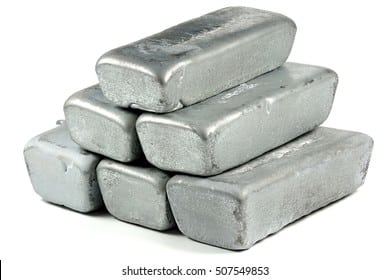An atomic mass unit (abbreviated AMU or amu) is defined as 1/12 the mass of a carbon-12 atom. The nucleus of the carbon-12 (C-12) atom has six protons and six neutrons. It is a unit of mass used to express atomic masses and molecular masses.
According to the International Union of Pure and Applied Chemistry (IUPAC), 1 atomic mass unit is defined as 1/12 the mass of carbon-12. Therefore, carbon-12 has a mass of 12 amu. Carbon-12 is the most abundant isotope of carbon.
Atomic masses are often written without units. However, the term “dalton” with the symbol “Da” is used in biochemistry and molecular biology writing, especially when talking about proteins. Proteins are usually measured in kilodaltons, or “kDa,” because they are large molecules.
In other words, one AMU is equal to the average of the rest mass of a proton and a neutron. This is about 1.67377 x 10 -27 kilogrammes (kg) or 1.67377 x 10 -24 grammes (g). In AMU, the mass of an atom is about the same as the number of protons and neutrons in the nucleus added together.
The atomic number is the number of protons in the nucleus of an atom. The atomic mass is the total number of protons and neutrons in an atom. Atomic mass units are used to talk express the mass of an element’s atoms.
AMU of different elements are listed in the table below:
| Element | atomic mass unit |
| hydrogen-1 | 1.00784 u |
| carbon-12 | 12.011 u |
| Oxygen | 16 u |
| Sodium | 22.989769 u |
| Nitrogen | 14.0067 u |
| Iron | 55.845 u |
| Calcium | 40.078 u |
Table of Contents
Atomic Mass Unit Examples
Some examples of atomic mass unit values for a few common elements are listed below:
- Hydrogen: 1.00794 amu
- Hydrogen has one proton and one electron, and most hydrogen atoms also have one neutron. The atomic mass of hydrogen is therefore close to 1 amu, but the actual value is slightly higher due to the presence of the neutron.
- Helium: 4.00260 amu
- Helium has two protons, two neutrons, and two electrons. The atomic mass of helium is therefore close to 4 amu, but the actual value is slightly higher due to the presence of the electrons.
- Carbon: 12.0107 amu
- Carbon has six protons, six electrons, and six neutrons. The atomic mass of carbon is therefore close to 12 amu, but the actual value is slightly higher due to the presence of the electrons and the neutrons.
- Nitrogen: 14.0067 amu
- Nitrogen has seven protons, seven electrons, and seven neutrons. The atomic mass of nitrogen is therefore close to 14 amu, but the actual value is slightly higher due to the presence of the electrons and the neutrons.
- Oxygen: 15.9994 amu
- Oxygen has eight protons, eight electrons, and eight neutrons. The atomic mass of oxygen is therefore close to 16 amu, but the actual value is slightly higher due to the presence of the electrons and the neutrons.
- Sodium: 22.9898 amu
- Sodium has 11 protons, 11 electrons, and 12 neutrons. The atomic mass of sodium is therefore close to 23 amu, but the actual value is slightly higher due to the presence of the electrons and the neutrons.
- Magnesium: 24.3050 amu
- Magnesium has 12 protons, 12 electrons, and 12 neutrons. The atomic mass of magnesium is therefore close to 24 amu, but the actual value is slightly higher due to the presence of the electrons and the neutrons.
- Chlorine: 35.453 amu
- Chlorine has 17 protons, 17 electrons, and 18 neutrons. The atomic mass of chlorine is therefore close to 35 amu, but the actual value is slightly higher due to the presence of the electrons and the neutrons.
Frequently Asked Questions
| No. | Question | Answer |
| 1. | What is the definition of atomic mass unit (amu)? | Atomic mass unit is a unit of mass equal to 1/12th of the mass of one atom of carbon-12. |
| 2. | What is the symbol for atomic mass unit? | The symbol for atomic mass unit is “u”. |
| 3. | What is the mass of one atomic mass unit? | The mass of one atomic mass unit is approximately equal to the mass of one proton or one neutron. |
| 4. | How is the atomic mass unit related to the mole? | One mole of a substance contains Avogadro’s number (6.02 x 10^23) of particles, and the mass is in grams per mole. |
| 5. | What is the difference between atomic mass and atomic weight? | Atomic mass is the mass of one atom of an element, while atomic weight is the weighted average of all isotopes. |
| 6. | What is the difference between atomic mass unit and Dalton? | Atomic mass unit and Dalton are essentially the same, but Dalton is a more modern term for the same unit. |
| 7. | How is the atomic mass unit used in mass spectrometry? | Mass spectrometry measures the mass-to-charge ratio of ions, and the unit used is often the atomic mass unit. |
| 8. | What is the relationship between atomic mass unit and energy? | The mass-energy equivalence formula, E=mc^2, relates the mass of an object to its energy, and uses atomic mass units. |
More Links
Molar Mass of Aluminum
Molar Mass of Methanol| Easy-Explanation
What is the molar mass for sulfur dioxide?
O2 Molar Mass
What is the Molar Mass of Nitrogen?
Hydrogen Molar Mass
Molar Mass of Acetic Acid| Easy-Explanation
- BCl3 Lewis Structure in four simple steps - November 1, 2023
- PH3 Lewis Structure in four simple steps - October 8, 2023
- PF3 Lewis structure in four simple steps - September 24, 2023



